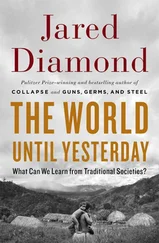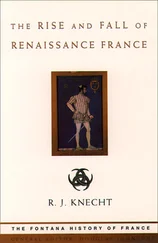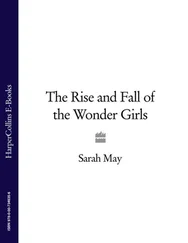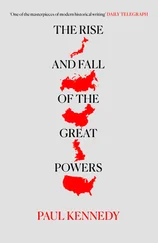Jared Diamond - The rise and fall of the third chimpanzee
Здесь есть возможность читать онлайн «Jared Diamond - The rise and fall of the third chimpanzee» весь текст электронной книги совершенно бесплатно (целиком полную версию без сокращений). В некоторых случаях можно слушать аудио, скачать через торрент в формате fb2 и присутствует краткое содержание. Год выпуска: 1991, ISBN: 1991, Издательство: RADIUS, Жанр: Биология, на английском языке. Описание произведения, (предисловие) а так же отзывы посетителей доступны на портале библиотеки ЛибКат.
- Название:The rise and fall of the third chimpanzee
- Автор:
- Издательство:RADIUS
- Жанр:
- Год:1991
- ISBN:0-09-174268-4
- Рейтинг книги:4 / 5. Голосов: 1
-
Избранное:Добавить в избранное
- Отзывы:
-
Ваша оценка:
- 80
- 1
- 2
- 3
- 4
- 5
The rise and fall of the third chimpanzee: краткое содержание, описание и аннотация
Предлагаем к чтению аннотацию, описание, краткое содержание или предисловие (зависит от того, что написал сам автор книги «The rise and fall of the third chimpanzee»). Если вы не нашли необходимую информацию о книге — напишите в комментариях, мы постараемся отыскать её.
The rise and fall of the third chimpanzee — читать онлайн бесплатно полную книгу (весь текст) целиком
Ниже представлен текст книги, разбитый по страницам. Система сохранения места последней прочитанной страницы, позволяет с удобством читать онлайн бесплатно книгу «The rise and fall of the third chimpanzee», без необходимости каждый раз заново искать на чём Вы остановились. Поставьте закладку, и сможете в любой момент перейти на страницу, на которой закончили чтение.
Интервал:
Закладка:
By analogy, how much an animal 'should' invest in biological repair depends on the expense of the repairs, and on a comparison of the animal's expected lifespan with and without the repairs. But such 'should' questions belong to the realm of evolutionary biology, not physiology. Natural selection tends to maximize one's rate of producing offspring that survive to leave offspring of their own. Evolution can thus be regarded as a strategy game, in which the individual whose strategy leaves the most descendants wins. Hence the type of reasoning used in game theory is helpful in understanding how we came to be the way we are.
This problem of lifespan, and of investment in biological repair, is in turn one of an even broader class of evolutionary problems addressed by game theory: the mystery of what sets the maximum limit on any advantageous trait. There are lots of other biological traits, besides lifespan, that beg the question why natural selection has not made them longer or bigger or faster or made more of them. For instance, people who are big or smart or can run fast have obvious advantages over small, dumb, slow people—especially throughout most of human evolution, when we were still fending off lions and hyenas. Why did we not evolve to become on the average even bigger, smarter, and faster than we now are? The complication that makes these evolutionary design problems less simple than they might at first seem is this: natural selection acts on whole individuals, not on single parts of an individual. It is you, not your big brain or fast legs, that does or does not survive and leave offspring. Increasing one part of an animal's body may be beneficial in some obvious respect but harmful in other respects. For instance, that one larger part might not fit in well with other parts of the same animal, or it might drain off energy from other parts.
To evolutionary biologists, the magic word that expresses this complication is 'optimize'. Natural selection tends to mould each trait to the size, speed, or number that maximizes the survival and reproductive success of the whole animal, given the animal's basic design. Hence each trait in itself does not tend towards a maximal value. Instead, each trait converges on some optimal intermediate value, neither too big nor too small. The whole animal is thereby more successful than it would be if that trait were bigger or smaller.
Should this reasoning about animals seem abstract, think instead of our everyday machines. Essentially the same principles apply to engineering design, of machines by humans, as to evolutionary design, of animals by natural selection. For example, consider my pride and joy among my machines, my 1962 Volkswagen Beetle, the only car I have ever owned. (Car buffs will remember 1962 as the year that Volkswagen introduced the big rear window in the Beetle.) On a smooth, level road with an assisting tailwind, my VW can go at 65 mph. To BMW owners, that may sound distinctly submaximal. Why don't I junk my puny 4-cylinder, 40-horsepower engine, install instead the 12-cylinder, 296-horsepower engine from my neighbour's BMW 750IL, and roar off at 180 mph down the freeway?
Well, even I, dodo about cars that I am, know that that would not work. To begin with, that huge BMW engine would not fit into my VW's engine compartment, which would need enlarging. Then, the BMW engine is meant to go in front, but the VW engine compartment is m the back, so I would have to change the gearbox and transmission and other things. I would also have to change the shock absorbers and brakes, designed to smooth the ride and stop a car at 65 mph but not at 180 mph. By the time I had finished modifying my VW to take the BMW engine, there would not be much remaining from my original Beetle, and the Modifications would have cost me a big pile of money. I suspect that my puny 40-horsepower engine is optimal, in the sense that I could no increase my cruising speed without sacrificing other performance features of my car—as well as sacrificing other money-requiring features of my lifestyle.
While the marketplace eventually eliminates engineering monstrosities like a VW with a BMW engine, all of us can think of monstrosities that took quite a while to eliminate. To those of you who share my fascination with naval warfare, British battle-cruisers are a good example. Before and during the First World War, the British navy launched thirteen warships called battle-cruisers, designed to be as large and with as many big guns as battleships but much faster. By maximizing speed and firepower, the battle-cruisers immediately caught the public imagination and became a propaganda sensation. However, if you take a 28,000-ton battleship, keep the weight of the big guns nearly constant, and greatly increase the weight of the engines while still maintaining total weight around 28,000 tons, you have to skimp on the weight of some other parts. The battle-cruisers skimped especially on weight of armour, but also on weight of small guns, internal compartments, and anti-aircraft defence. The results of this suboptimal overall design were inevitable. In 1916 H.M.S. Indefatigable, Queen Mary, and Invincible all blew up almost as soon as they were hit by shells at the Battle ofjutland. H.M.S. Hoodblew up in 1941, a mere eight minutes after entering battle with the German battleship Bismarck. H.M. S. Repulse was sunk by Japanese bombers a few days after the Japanese attack on Pearl Harbor, thereby acquiring the dubious distinction of being the first large warship to be destroyed from the air while in combat at sea. Faced with this stark evidence that some spectacularly maximal parts do not make an optimal whole, the British navy let its programme of building battle-cruisers become extinct. In short, engineers cannot tinker with single parts in isolation from the rest of a machine, because each part costs money, space, and weight that might have gone into something else. Engineers instead have to ask what combination of parts will optimize a machine's effectiveness. By the same reasoning, evolution cannot tinker with single traits in isolation from the rest of an animal, because every structure, enzyme, or piece of DNA consumes energy and space that might have gone into something else. Instead, natural selection favoured that combination of traits that maximizes the animal's reproductive output. Thus, both engineers and evolutionary biologists have to evaluate the trade-offs involved in increasing anything; that is, its costs, as well as the benefits that it would bring. An obvious difficulty in applying this reasoning to our life-cycles is that they have many features seeming to reduce, not to maximize, our ability to produce offspring. Growing old and dying is just one example; other examples are human female menopause, bearing one baby at a time, producing babies only once every year or so at most, and not even starting to produce babies until the age of twelve to sixteen. Would not natural selection favour the woman who reached puberty at age five, completed gestation in three weeks, regularly bore quintuplets, never underwent menopause, put lots of biological energy into repair of her body, lived to 200, and thereby left hundreds of offspring?
But posing the question in that form pretends that evolution can change our bodies one piece at a time, and ignores the hidden costs. For example, a woman certainly could not reduce the length of pregnancy to three weeks without changing anything else about herself or her baby. Remember that we only have a finite amount of energy available to us. Even people doing hard exercise and eating rich food—lumberjacks, or marathon runners in training—cannot metabolize much more than about 5,000 calories per day. How should we allocate those calories between repairing ourselves and rearing babies, if our goal is to raise as many babies as possible? At the one extreme, if we put all our energy into babies and devoted no energy to biological repair, our bodies would age and disintegrate before we could rear our first baby. At the other extreme, if we lavished all our available energy on keeping our bodies in shape, we might live a long time but would have no energy left for the exhausting process of making and rearing babies. What natural selection must do is to adjust an animal's relative expenditures of energy on repair and on reproduction, so as to maximize its reproductive output, averaged over its lifetime. The answer to that problem varies among animal species, depending on factors such as their risk of accidental death, their reproductive biology, and the costs of various types of repair. This perspective can be employed to make testable predictions about how animals should differ in their repair mechanisms and rates of aging. In 1957 the evolutionary biologist George Williams cited some striking facts about aging that become comprehensible only from an evolutionary perspective. Let's consider several of Williams's examples and re-express them in the physiological language of biological repair, by taking slow aging as an indication of good repair mechanisms.
Читать дальшеИнтервал:
Закладка:
Похожие книги на «The rise and fall of the third chimpanzee»
Представляем Вашему вниманию похожие книги на «The rise and fall of the third chimpanzee» списком для выбора. Мы отобрали схожую по названию и смыслу литературу в надежде предоставить читателям больше вариантов отыскать новые, интересные, ещё непрочитанные произведения.
Обсуждение, отзывы о книге «The rise and fall of the third chimpanzee» и просто собственные мнения читателей. Оставьте ваши комментарии, напишите, что Вы думаете о произведении, его смысле или главных героях. Укажите что конкретно понравилось, а что нет, и почему Вы так считаете.












